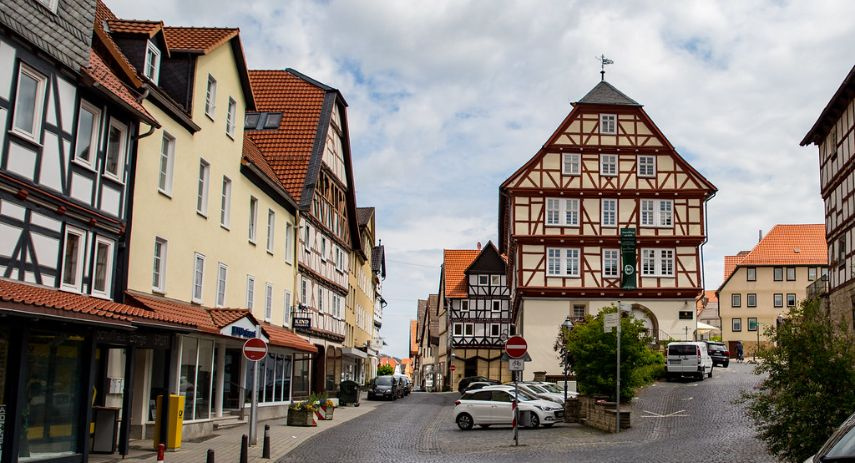
BürgerEnergieGenossenschaft Wolfhagen eG.
cooperative ownership, shared ownership, inclusive board structures
BürgerEnergieGenossenschaft Wolfhagen e.G (BEG Wolfhagen) is a consumer cooperative that co-owns its town’s municipal energy company alongside the local council. Its therefore both an example of cooperative and shared ownership
A commitment to renewable housing energy
The German town of Wolfhagen started the journey to take back control of its energy grid in 2003, after the Council decided to take over the license from E.ON and use the city’s Stadtwerke (municipally owned energy supplier), to deliver energy services. After taking over the grid in 2006, in 2008 the Council make a commitment to ensuring that all household electricity would be provided from local renewables by 2015 – and the Stadtwerke was the vehicle they used to deliver on this commitment.
A public-common partnership with enhanced rights for the cooperative
The Stadtwerke needed to develop more local renewables to facilitate this, making plans for a new solar park and wind farm. Simultaneously, and partly to generate support for these developments, the town’s leaders had an ambition to use an innovative form of “cooperative participation” to co-govern and derive benefits for local people from the municipally-owned energy system. The solution they developed to raise funds for the solar park and develop a co-governance model was a cooperative - BürgerEnergieGenossenschaft Wolfhagen e.G (BEG Wolfhagen). The function of the cooperative was to sit alongside the Council in co-owning and co-governing the Stadtwerke, placing the energy system into joint ownership.
BEG Wolfhagen owns nearly a 40% stake in the utility company. The cooperative is wholly shaped by its membership, which has grown from 264 in 2012 to 970 members in 2024. Although members can hold up to five shares worth €500 each, all members have one vote each, regardless of the number of shares they own. The cooperative is managed by the Supervisory Board which consists of three members of the cooperative who are appointed by members every three years. This Board appoints the Stadtwerke’s Board of Directors and the four BEG representatives who sit on the Stadtwerke’s advisory board. While BEG Wolfhagen has a minority number of representatives on the advisory board (four of 11 in total), when they were founded, they negotiated with the Stadtwerke to determine that the cooperative would have enhanced voting rights – meaning that if decisions are being taken about taking over a new branch of the Stadtwerke, or selling the Stadtwerke, the cooperative must vote in favour, or the proposed action cannot be taken. This structure allows the cooperative input into strategic decisions on all issues concerning electricity production and supply in the region.
Distribution of profits and investment into the town
The combination of the cooperative and shared ownership model derives significant benefits to the community. The Stadtwerke generates a profit every year, which funds the town’s kindergartens. Although cooperative members pay a normal tariff for their energy consumption (which is still cheaper than E.ON), they receive dividends on their investment of between 3-5.5% each year. The cooperative also has an Energy Efficiency Fund, funded by surplus revenues, which provides grants to households to purchase energy-saving appliances. Indeed, the organisation has won national prizes for its innovation around reducing energy use.
This example is what has been described as a “public-common partnership” where the municipal utility is co-owned and co-governed by a cooperation between the public authority and a citizen/consumer cooperative. It has created clear routes for local voice, democracy and transparency, as well as significant benefits to the local community.